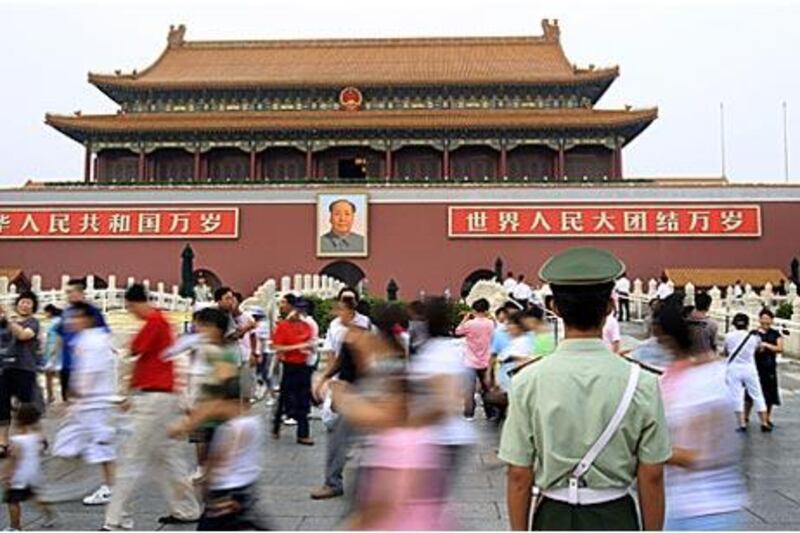There's more than 3,000 years of history, the world's best-preserved ancient palace and the Great Wall just outside of town. But it's not all about the past and this is the thriving capital of the world's most populous nation. Best of all is being able to take advantage of all the traveller-friendly modifications created for the 2008 Olympics but without the Olympic crowds. Or, at least, with crowds but not quite as big as the Olympic ones.
Beijing is centred around the Forbidden City, a world heritage site that for nearly 500 years was home to the emperors of the Ming and Qing Dynasties. Surprisingly, the official name for this 72-hectare site containing the Gate of Divine Prowess, the Hall of Earthly Peace, the Palace of Heavenly Beauty and the Hall of Protective Harmony is the unspeakably dull title of the Palace Museum. It was reputedly designed to have 9,999 halls - one short of the 10,000 halls said to exist in God's celestial palace - but there are now only around 8,700. Either way, it's gobsmackingly impressive and, as a consequence, gobsmackingly crowded, mostly with Chinese tourists.
Just south is the vast, austere and - given the events of 1989 - slightly creepy atmosphere of Tiananmen Square, featuring Mao's Mausoleum in the middle and China's Parliament, the Great Hall of the People, on one side and the National Museum of China (closed for renovations until next year) on the other. Circling the Forbidden City and, courtesy of the way Beijing was rebuilt after Genghis Khan razed it in the 13th century, are the courtyard-based clusters of homes and laneways known as the hutongs. They've recently survived a second threat of modernisation but the Chinese now value these historic regions. This is where the real Beijing still exists, rather than a Disneyfied version created for tourists.
On the north-west outskirts of Beijing is the Summer Palace, where the emperors took advantage of the breezes from the surrounding hills and the cooling effect of the lake to escape the worst of the city's summer heat. Now throngs of tourists wander the 1.8km-long covered walkway once enjoyed by emperors. Several sections of the Great Wall are within day-trip distance of Beijing. Badaling is the nearest renovated part of the wall and pays the price in overpopularity but Simatai, Jingshanling and Mutianyu are all within a few hours drive of the city.
Budget Beijing has more than its share of soulless, bleak and utilitarian hotels but a cheap and authentic option is to stay in one of the traditional courtyard-based homes in the hutongs. Sitting on the City Walls is a good one, with ensuite double rooms costing from US$56 (Dh204) per night. Sitting on the City Walls, 57 Nianzi Hutong, Dong Cheng District (www.beijingcitywalls.com; 0086 10 6402 7805).
Mid-range Still in the hutongs but with a bit more comfort to go with the authenticity is Hotel Côté Cour, situated within walking distance east of the Forbidden City and Tiananmen Square. A double room costs from $186 (Dh680) per night. Hotel Côté Cour, Yanyue Hutong, Dong Cheng District (www.hotelcotecourbj.com; 0086 10 6512 8020). Luxury The Aman at Summer Palace combines peerless attentive-but-not-intrusive service with one of the world's great hotel sites, a restored part of the Summer Palace. Staying here gives you after-hours' access so you can avoid the hordes and watch the locals do their t'ai chi at dawn or take a moonlight stroll through the 290-hectare grounds. A double room costs from $632 (Dh2,320) per night. The Aman at Summer Palace, 15 Gongmenqian St (www. amanresorts.com; 0086 10 5987 9999).
Breakfast The Chinese are famous for their cuisine but there's a reason why their breakfasts are not well known, since bland and watery rice porridge (zhou) and deep-fried dough sticks (youtiao), along with steamed buns, washed down with hot soya bean milk are unlikely to enthuse any gourmands.
Lunch Particularly if you skipped breakfast, try one of the tiny restaurants that dot the streets of Beijing. The rules are simple and don't require any proficiency in Mandarin - find a place packed with locals, since they know where the good food is. If there is no English menu look at what the other diners are eating, find something that appeals and point at it while looking at the waiter. A meal is unlikely to cost more than $3 (Dh11) and is more likely to be around half that. Beijing food tends to be less fiery than in other regions of the country.
Dinner The Chinese take their food seriously and there are lots of outstanding restaurants in Beijing in clusters like Guijie restaurant street to the east of the Forbidden City. But for something different, try Wangfujing snack street nearby where in the evenings a series of stalls spring into life selling everything from the routine (fried dumplings, barbecued chicken) to the bizarre (skewers of scorpions, silkworms and seahorses). It's more for the tourists than the locals, and the prices reflect that.
Return flights on Etihad Airways (www.etihadairways.com) from Abu Dhabi to Beijing cost from $960 (Dh3,525) including taxes.
Wild Swans, by Jung Chang, recounts her life - as well as that of her mother and grandmother - in a way that captures perfectly the progression of China through the 20th century. travel@thenational.ae





